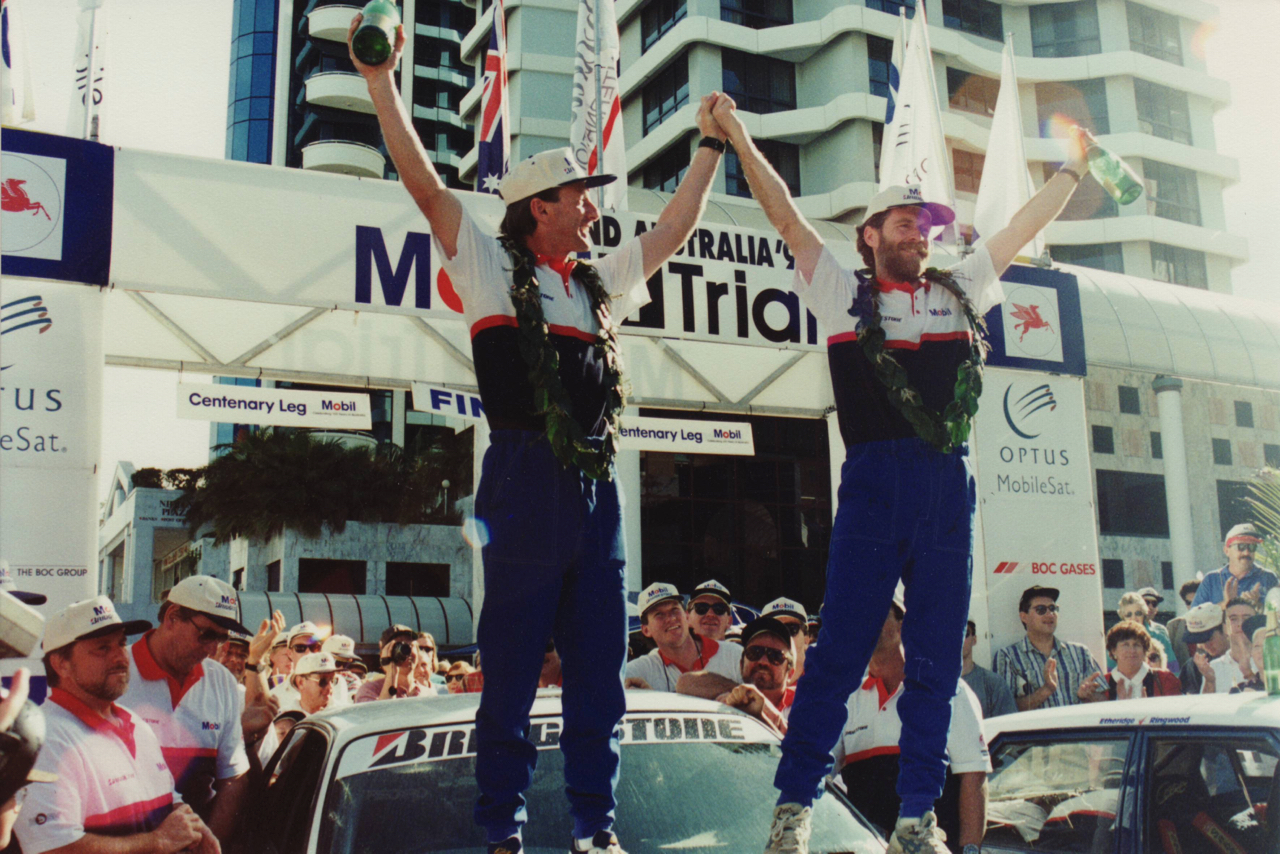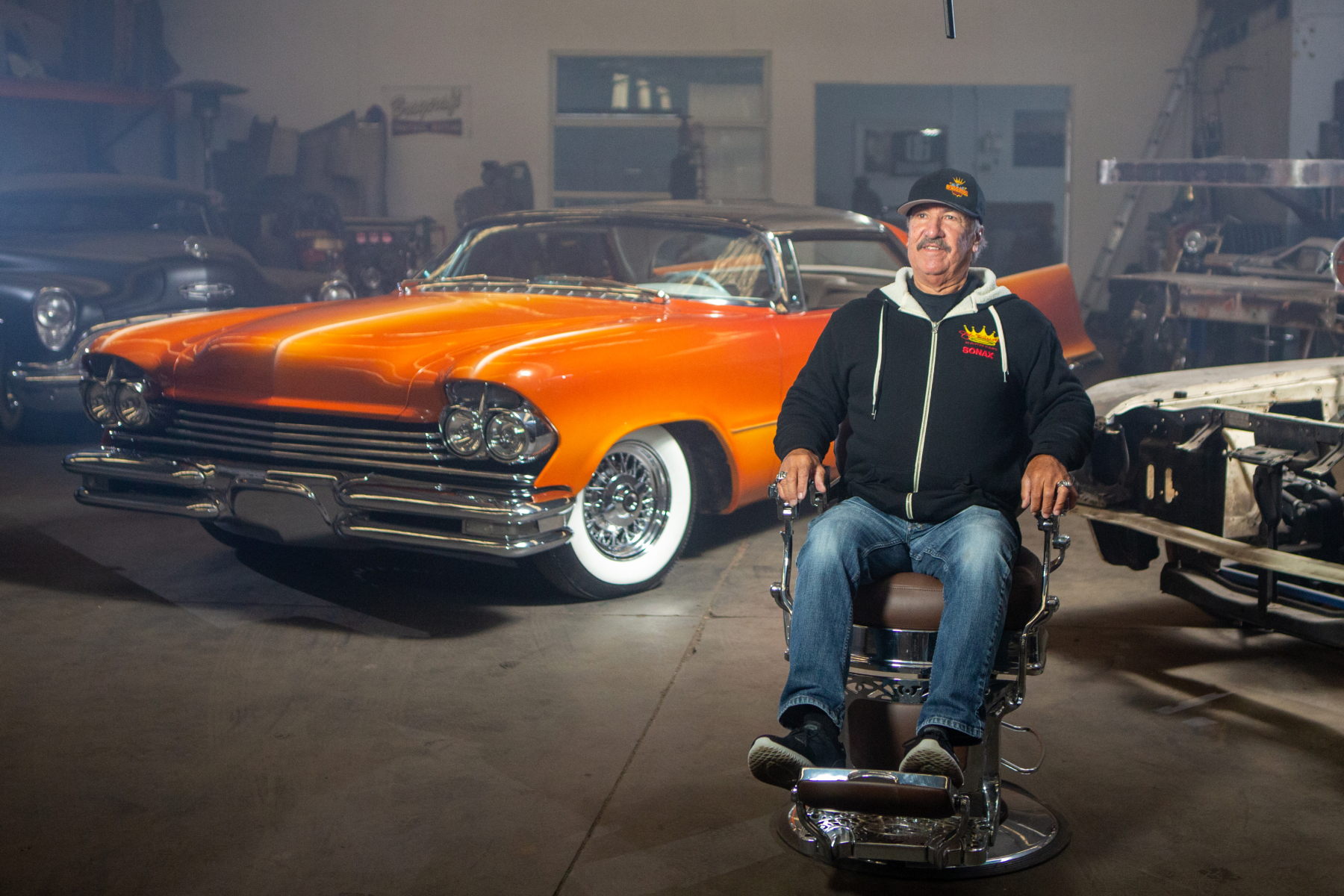

Back before television, the Internet or advertorials the best way to promote your product was for it to make headlines in newspapers across the country.
To do that you needed to create some sort of event that was going to capture the attention of the entire nation, so how about a car race that visited most of the nation’s populated regions and was disguised as a Reliability Trial?
ReDeX was the manufacturer of an additive that helped extend the life of tired engines and it was to be the product behind Australia’s most ambitious automotive event.
The 1953 ReDeX Around Australia Trial was scheduled to start from Sydney and take competitors into Queensland then to Darwin before turning south to Adelaide, through Victoria and back to Sydney. Cars that completed the course would be away for a fortnight and cover almost 10,500 kilometres.
Response was extraordinary and alongside some of Australia’s best-known racing drivers came entries from novices in totally unsuited cars who were happy enough just to ‘give it a go’.
The publicity generated was immense, with reports filling the pages of newspapers everywhere the cars stopped. Newsreel camera crews who supplied vision to cinemas across the country could be seen crouched behind protective trees and chasing cars though scrub and desert at insane speeds.
192 cars eventually started and 136 would return to Sydney, with the winning Peugeot just one point ahead of the second-placed Humber and the ten best-placed cars separated by just 15 points lost. Next year needed to be tougher, and it was.
The 1954 ReDeX Trial covered more than 15,000 kilometres including ‘horror stretches’ which no competitor could (supposedly) traverse without loss of points. Major components were marked so they couldn’t be replaced without significant points loss and structural damage would be penalised too.
No one seemingly mentioned these strategies to Sydney garage proprietor and racing driver ‘Gelignite’ Jack Murray, who had entered the event in a six-year-old Ford V8.
Heading for Mt Isa, Murray thwarted attempts by officials to catch competitors exceeding the nominated average speed, then on a ‘horror stretch’ where others were losing time, he used the power and strength of his 1948 model to pass 23 cars and be the only entrant to ‘clean sheet’ the stage. Once in the lead, Murray was unstoppable and went on to complete the event with no points lost at all.
1955 marked the first win for Volkswagen in what would become the German brand’s sphere of dominance. It was also the event that ended ReDeX involvement in Trials, following a monumental organisational blunder that bogged most of the field in a muddy paddock, protests and widespread discontent.
A battle for dominance then ensued between fuel brands Ampol and Mobilgas, with both companies supporting Trials during 1956. These were won respectively by Peugeot and Volkswagen.
The same rivalry continued through 1957 and 1958, with Ampol’s events attracting bigger names and more intensive publicity. Volkswagens either won or finished no worse than 3rd in every event, however the 1958 Ampol Trial did see Holden finally open its account with a win.
Six years elapsed before another Round Australia event was proposed and again the naming rights supporter was Ampol. This time the organisation was more professional, as was participation by factory-backed teams.
Volkswagen’s favoured runners were there in strength, but in new 1500S sedans not the venerable Beetle. There were hordes of Holdens as well, a couple Falcons and Ford Cortinas, Peugeots and a Volvo. Harry Firth’s Cortina won, but only barely from Barry Ferguson’s Volkswagen and Greg Garard’s EH Holden which were tied for second.
Surely a tie could not be possible again in such an arduous and diverse event, but in 1970 when Ampol backed a Bicentennial Trial, it did happen and this time the squabble was over the winner’s trophy.
The 1970 Ampol Trial covered just 10,199 kilometres but was a massive test of automotive and human endurance. Factory teams backed by Holden. Ford and Renault battled a trio of Citroens sponsored by a newspaper group and a Datsun 1600 with two of Africa’s best rallyists aboard. Eventually the win was shared by one of the Citroens and the Datsun, but that was end of the line for Ampol.
Nine years later, automotive parts specialist Repco was persuaded to back another tilt at the Round Australia windmill and did so with massive public and manufacturer involvement.
Helping in that regard was Holden with a trio of six-cylinder Commodores. The driver list was headed by maestro Peter Brock with a supporting cast of equally talented rally stars. There was a Ford team too, of three Cortinas led by multiple Australian Rally Champion Colin Bond and back in the pack a Volvo driven with extraordinary skill by another ARC hero in the form of Ross Dunkerton.
No one normally remembers who finishes 4th in a motor sport event, but followers of Australian Rally history know it was the Dunkerton Volvo that would chase home the Holdens which, led by Brock’s car, recorded a 1-2-3 clean sweep.
It then took a long, long time before anyone attempted another Round Australia motoring event, but in 1995 Mobil accepted the challenge. The US-based fuel retailer had been off the rally scene since the 1950s but remained a prominent supporter of Peter Brock’s Bathurst Commodores and would bankroll the final event of its kind to be held in this country.
Again, it was a team of Holdens that captured public interest and again Brock would be driving one of them. But this time there would be no 1-2-3 Holden fairy-tale and no podium for Australia’s best-known driver.
Instead, victory in the Mobil 1 Trial went to 1990 Australian Rally Champion and Mitsubishi works driver Ed Ordynski, accompanied by veteran co-driver Ross Runnalls.
As winner of his first and only Round Australia event, we asked for Ed’s unique perspective on the Trial, his preparation for the task and how he preserved a big, cumbersome car throughout an event that would claim lighter and more nimble rivals.
“In addition to the ARC win I was successful four times in the National Group N championship and won the Group N division in World Rally Championship events on nine occasions,” Ed explained. “Group N is for cars that are rallied in relatively standard trim so I was seen as a driver who was able to set fast times while preserving the car. That is who Holden Team Manager George Shepheard wanted to run in tandem and in virtually identical cars alongside Peter Brock.”
“We knew it wouldn’t be a rerun of 1979 because we were up against 4WD rally cars and also the big off-road 4WDs that would have an advantage in the outback. In the forests and on the more open outback roads though, the Commodore was very fast.”
Unlike previous events where major components could not be changed without serious points loss, the Mobil 1 entrants needed only to finish with their original engine block and body. Everything else could be – and often was – changed during scheduled and unscheduled service stops, as Ed Ordynski recalled.
“One of our team cars had its valve springs fail so I was told to make as much time as I could on a ‘transport’ stage to allow for a cylinder head change which was accomplished in just 40 minutes. At various times during the event the entire front end and differential were also replaced, but other people did the same and more.”
“Mental toughness is a major factor in rallying and so is physical fitness. I was always fairly fit throughout my career but trained specially the Trial. Being ready mentally is something I guess I had built up over many years, beginning when running events out in the desert in my old Corolla KE10, but also in events like Rally Australia where you are under intense pressure from some of the world’s best drivers.”
Will there ever be another Round Australia Trial? Ed Ordynski is doubtful but says if one were to be held it would need very intensive safety provisions and be for a specific class of car.
“Cost would be a major factor,” Ed commented. “You would need huge numbers of people to secure and manage special stages to maintain safety so involvement by a manufacturer to provide the backing for a well-constructed event would be essential.”
‘Also given the changing world environment I think you would probably need to make it only for electric cars”.
“Just as Holden went into the Mobil 1Trial to prove the durability of the Commodore’s independent rear suspension, a Trial over some distance and difficult roads would prove the durability of electric vehicles.” (Not a silly idea when Hyundai is already trialling a fully electric rally car and others will surely follow. Ed.)
While there isn’t much chance of another Round Australia rally being held, there still exist some vehicles that took part in previous events and Enthusiast would love the opportunity to insure them.
Even if your historic vehicle has never competed in motor sport or lives in a shed and only appears for the occasional show, various levels of cover including Laid Up policies are available.
To discover how to save on quality insurance cover for one vehicle or a collection, take a few minutes day or night to visit Enthusiast https://www.enthusiast.com.au/ then select Quick Quote. If you have special insurance needs or numerous vehicles, contact our Customer Service team on 1800 10 44 44.
Background for this feature was sourced from contemporary automotive magazines and the book From Redex To Repco by Bill Tuckey and Thomas B. Floyd (Gregorys Publications 1979).
Images permission by Ed Ordynski

